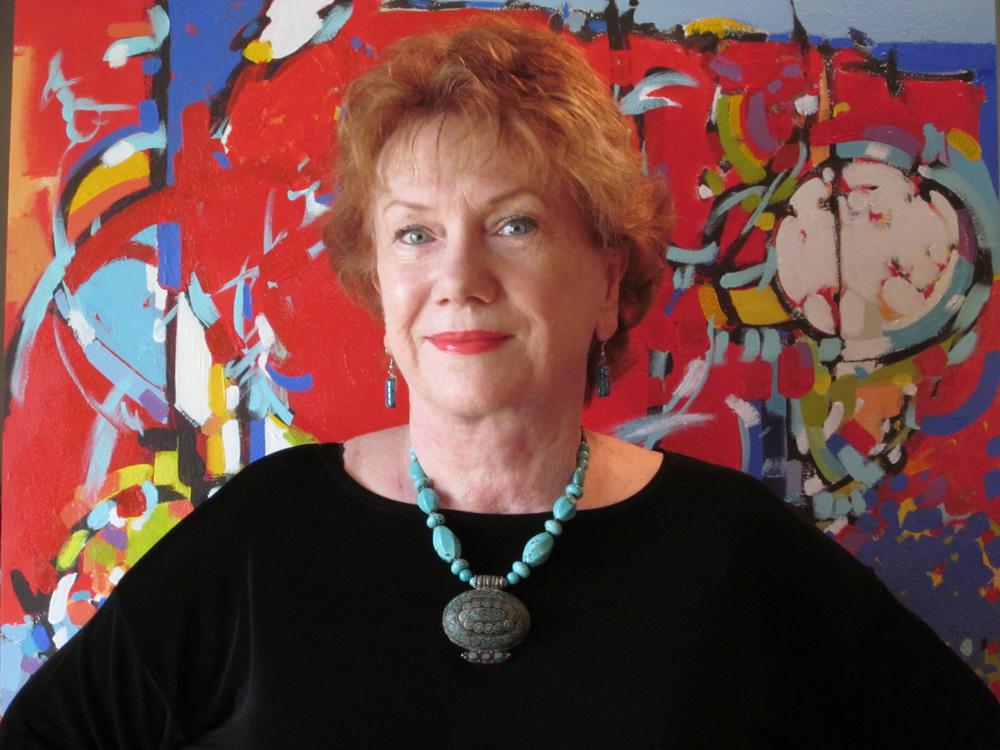London artist Johnnene Maddison has won CARFAC’s National Visual Arts Advocacy Award for 2014, recognizing a professional artist who has made a significant contribution to the Canadian visual arts community. Maddison has taught art to adults for more than 40 years. She was on the committee that created the London Arts Council, serving on its board from 1997 to 2000. Maddison is also a founding member of the National Museum of Women in the Arts in Washington DC, and she has volunteered with the London Artists’ Studio Tour and the Canadian Embroiderers’ Guild. Here, she tells us what issues are most pressing for Canadian artists today, and what they can do to make the scene better.
Q: What do you think are the most pressing issues facing Canadian artists today?
A: I think for female artists, it’s difficult to get the recognition and the exhibition space that male artists get both in public and private galleries.
If you look at the list of artists in any of our publicly owned galleries, you will see it’s quite weighted on the side of male artists. And in the private commercial galleries, it’s the same story—they’re showing more by male artists
Although I think women are starting to catch up. I’m a founder of the National Museum of Women in the Arts in Washington DC, and they have a whole organization based on collecting and exhibiting women’s art.
That museum has been around since 1980. Canada could use one of those!
I do think Canadian artists in general are a lot luckier than artists in many other countries, because we have many more grant opportunities. I have artist friends in the US, and they area amazed at the types of grants we have in the Canada. They are also amazed by the artist fees we get when showing in public galleries—and that’s all because of CARFAC, which started the fee schedule artists should be paid for exhibitions. They also just won an appeal on that topic. But many places in the world don’t have that.
Q: Some say that focusing on feminism or on women’s art is passé or essentialist—or no longer necessary. What is your response to those points of view?
A: I’ve heard that mainly from younger women—some seem to think that that whole movement is a bad word. They don’t understand it, and they don’t see why we need it. And that’s because they’re young!
I went through being sexually harassed at work many, many, many times, and having to leave jobs because of that. I went through jobs were I had to walk in the back door when men worked in the front door. When I first started teaching, I was told I could only wear skirts and dresses, not slacks—even though I was an art teacher and had to climb up and down a ladder to get supplies from a cupboard.
Some young women don’t understand that, or believe it. They didn’t experience it; they didn’t participate in marches and letter-writing to government to get to where we are now.
So I feel like there is a backsliding there. When you talk with some young women about equality of the sexes, they talk about sex. Like, that can dress as revealing as they’d like, and that they can participate in sex the way men historically have. They don’t realize that feminism is about more than that.
Q: How do you balance your art practice with your art advocacy work? The latter can take up a lot of time.
A: It certainly does, and the balance is extremely tough. And it’s hard for me, because I’m a very social, outgoing person. I’m not the kind of artist who spends all my time all alone in my studio cranking out work. Sometimes I think I should be like that!
I love meeting people from different places, so I often organize workshops for other artists to come here [to London] and teach what they’ve been doing in other parts of Canada and the US. I billet them in my home, which is wonderful, because I’ve been able to meet artists from all over the place, and then I get to go visit them.
So I think the advocacy role is so important to an artist. It helps you grow, it exposes us to artists in different places, and it I think it makes us better, more well-rounded artists.
Q: What is your advice for others who want to grow a better art scene?
A: I think joining things is really important. I know that’s difficult for a lot of people; not everyone is like I am when it comes to being sociable. But joining art groups and maybe groups connected with their local art museum or art gallery, or joining studio tours— anything where they can do go out and meet other artists.
I also think going to openings is incredibly important. I try to go to openings here and support my friends. I know openings are so anxiety-producing for an artist when it’s one’s own opening—we’re all scared no one is going to come! So it’s important to go and support each other.
Q: Is there anything else you’d like our readers to consider?
A: I think it’s important to mention mentoring, too. I like to talk to younger artists and involve them in projects around town, and I’m always sending young artists information about opportunities like juried shows they could enter or exhibition opportunities or contests, or trying to get them involved in the studio tour. So I think mentoring is extremely important once you’ve been in the field for a long time—particularly mentoring the female artists and trying to help them along with their career.
Johnnene Maddison will officially receive the National Visual Arts Advocacy Award as part of CARFAC’s National Conference for Visual Artists on the evening of September 20 at Artscape Youngplace in Toronto.









